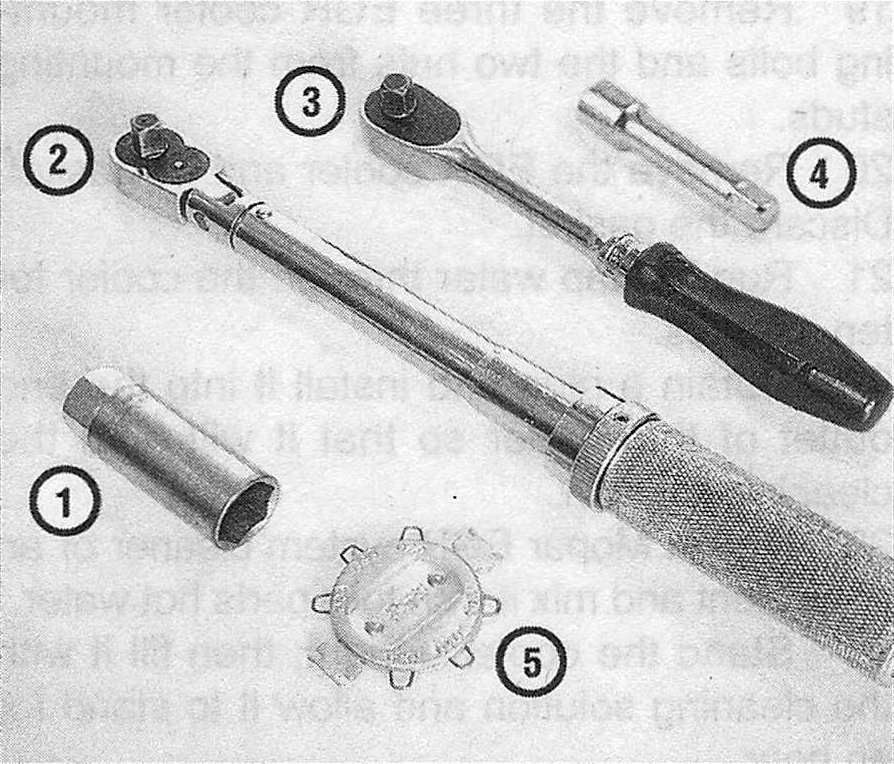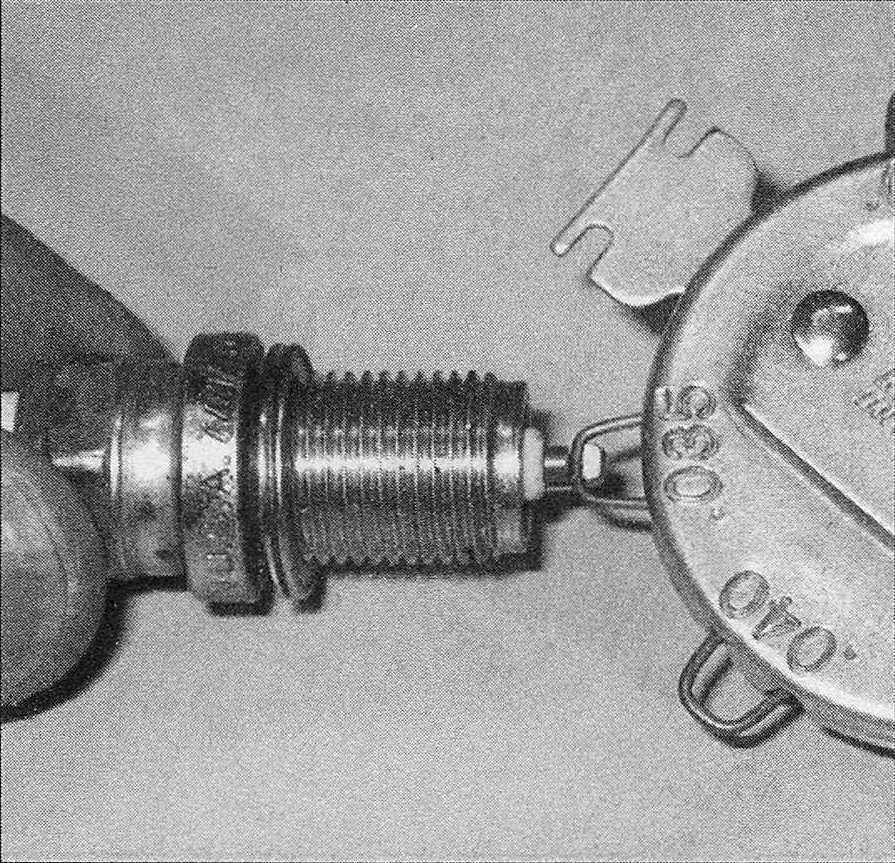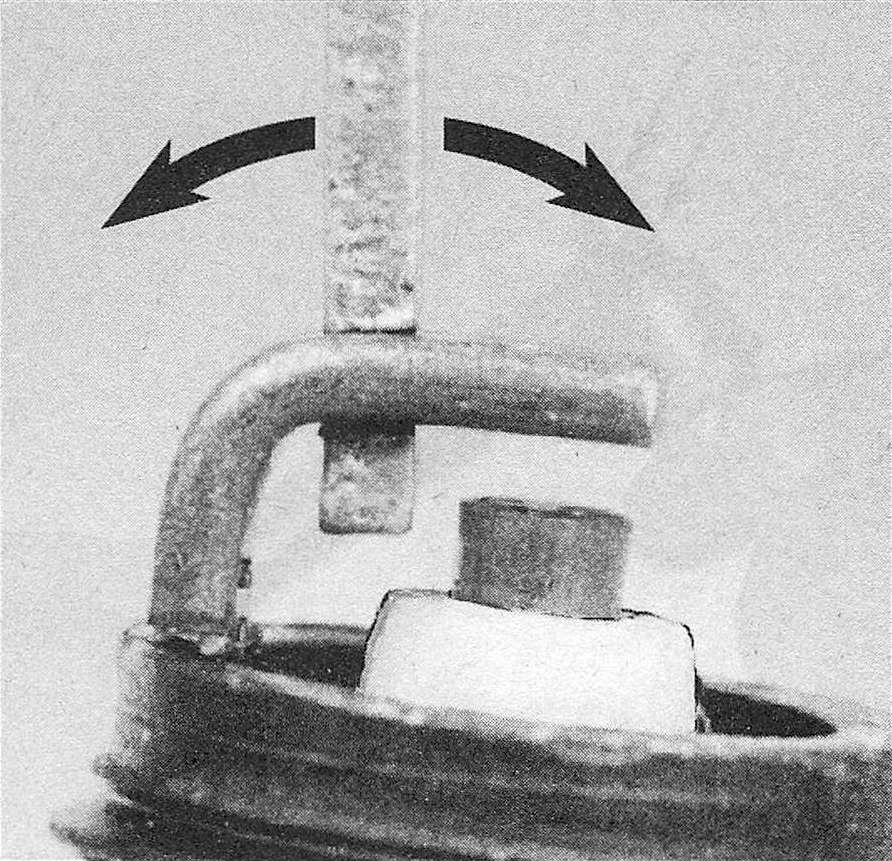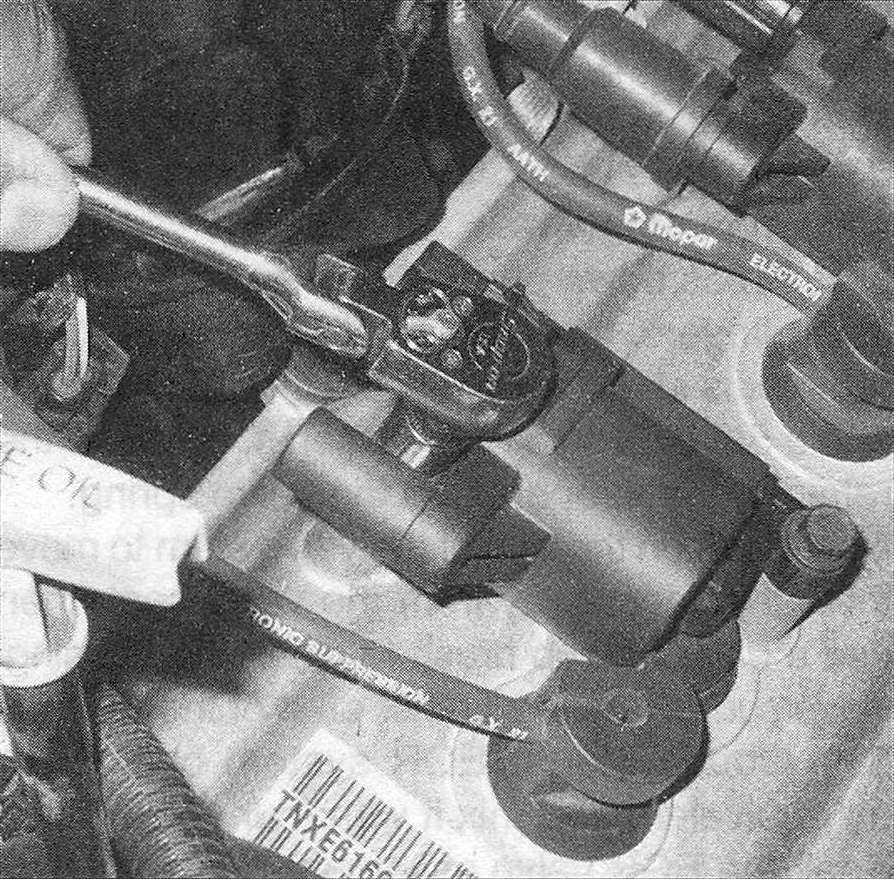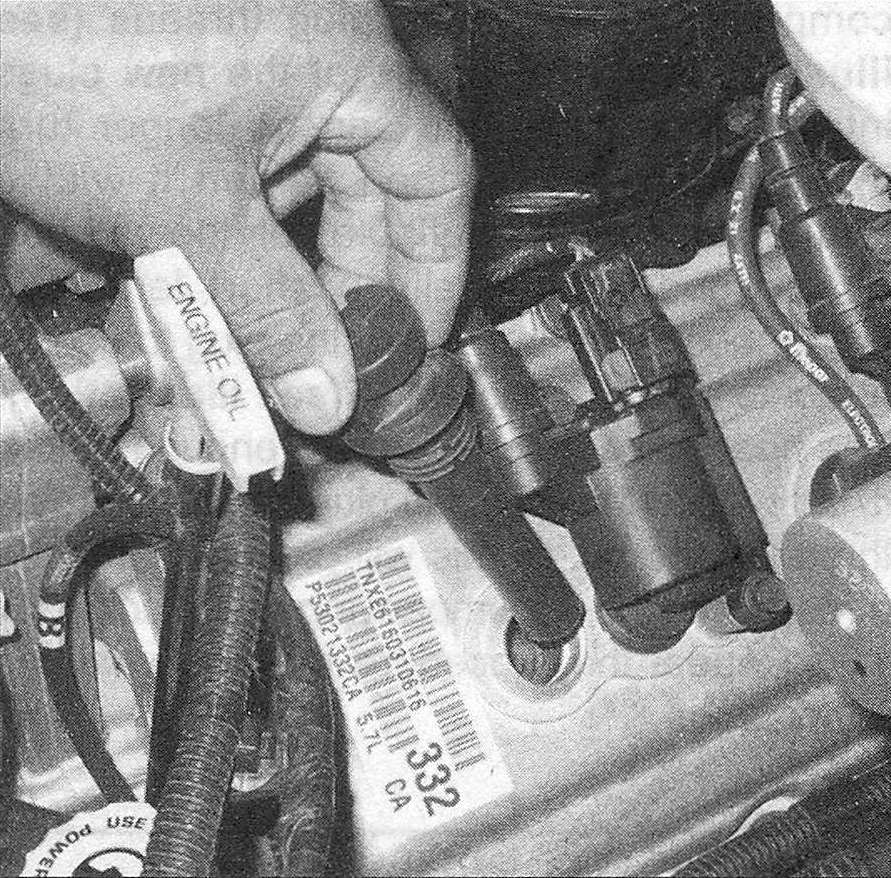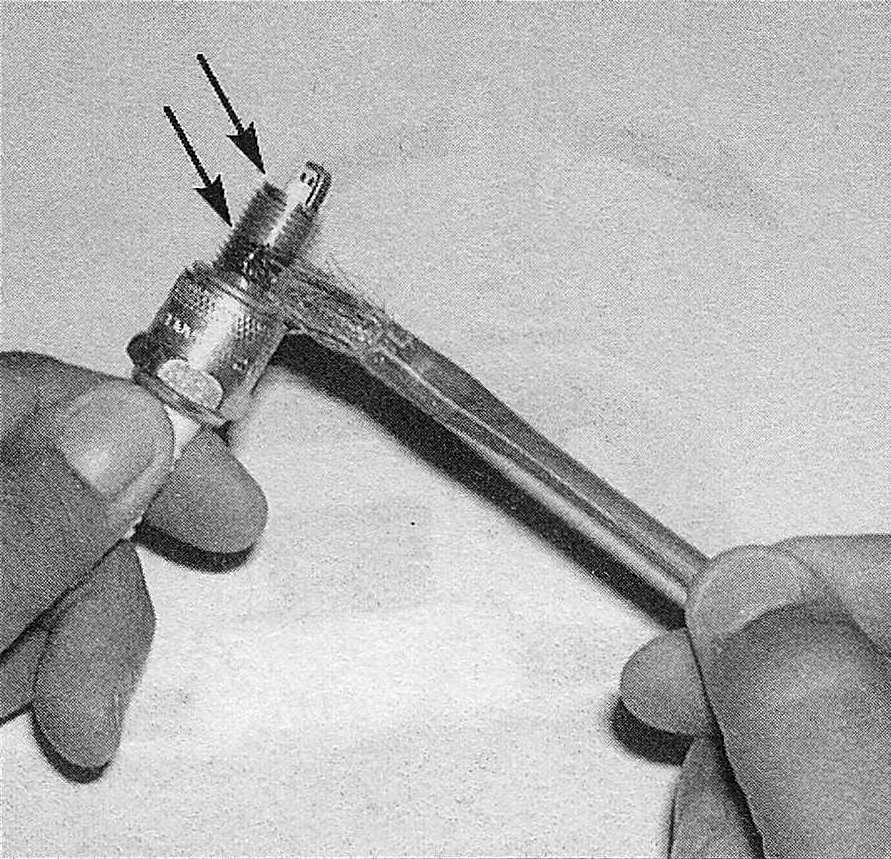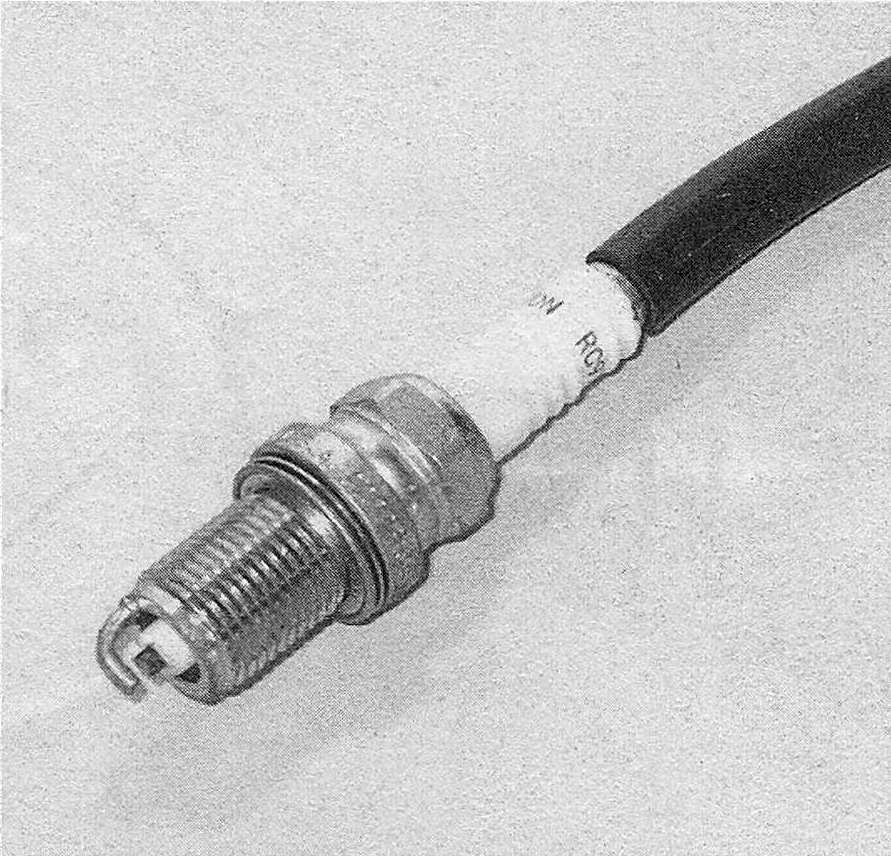Spark plug replacement (gasoline engines)
(every 30,000 miles or 24 months)
Note: This service interval is for 3.6L, 3.7L, 5.7L and 6.4L engines. On 4.7L engines, replace the upper (intake) spark plugs every 45,000 miles and the lower (exhaust) spark plugs every 90,000 miles.
Note: 4.7L engines use different spark plug types on the upper and lower banks.
1. The spark plugs are threaded into the cylinder heads.
2. In most cases, the tools necessary for spark plug replacement include a spark plug socket which fits onto a ratchet (spark plug sockets are padded inside to prevent damage to the porcelain insulators on the new plugs), various extensions and a gap gauge to check and adjust the gaps on the new plugs (see illustration). A special plug wire removal tool is available for separating the wire boots from the spark plugs, but it isn’t absolutely necessary. A torque wrench should be used to tighten the new plugs.
25.2 Tools required for changing spark plugs
1 Spark plug socket – This will have special padding inside to protect the spark plug porcelain insulator
2 Torque wrench – Although not mandatory, use of this tool is the best way to ensure that the plugs are tightened properly
3 Ratchet – Standard hand tool to fit the plug socket
4 Extension – Depending on model and accessories, you may need special extensions and universal joints to reach one or more of the plugs
5 Spark plug gap gauge – This gauge for checking the gap comes in a variety of styles. Make sure the gap for your engine is included
3. The best approach when replacing the spark plugs is to purchase the new ones in advance, adjust them to the proper gap and replace them one at a time. When buying the new spark plugs, be sure to obtain the correct plug type for your particular engine. This information can be found on the Emission Control Information label located under the hood, in the factory owner’s manual and in this Chapter’s Specifications. If differences exist between the plug specified on the emissions label and in the owner’s manual, assume that the emissions label is correct.
4. Allow the engine to cool completely before attempting to remove any of the plugs. While you’re waiting for the engine to cool, check the new plugs for defects and adjust the gaps.
5. The gap is checked by inserting the proper-thickness gauge between the electrodes at the tip of the plug (see illustration). The gap between the electrodes should be the same as the one specified in this Chapter’s Specifications. Note: We recommend using a wire-type thickness gauge when checking the spark plugs. If the gap is incorrect, use the adjuster on the gauge body to bend the curved side electrode slightly until the proper gap is obtained (see illustration). If the side electrode is not exactly over the center electrode, bend it with the adjuster until it is. Check for cracks in the porcelain insulator (if any are found, the plug should not be used).
25.5a Spark plug manufacturers recommend using a wire-type gauge when checking the gap on platinum or iridium spark plugs
25.5b To change the gap, bend the side electrode only, and be very careful not to crack or chip the porcelain insulator surrounding the center electrode
6. Some engines are equipped with individual ignition coils which must be removed first to access the spark plugs (see illustration). On engines equipped with spark plug wires, with the engine cool, remove the spark plug wire from one spark plug. Pull only on the boot at the end of the wire – do not pull on the wire (see illustration). Note: On 3.6L engines, it will be necessary to remove the upper intake manifold (see 3.6L V6 engine) to gain access to the right-side ignition coils.
25.6a On models with individual ignition coils, remove the mounting bolts and the individual coil (s) to access the spark plug(s) (one type shown, others similar)
25.6b Hemi engines have spark plug (s) located under spark plug wire(s) in addition to the individual ignition coils
7. If compressed air is available, use it to blow any dirt or foreign material away from the spark plug hole. The idea here is to eliminate the possibility of debris falling into the cylinder as the spark plug is removed.
8. Place the spark plug socket over the plug and remove it from the engine by turning counterclockwise (see illustration).
25.8 Use a socket and extension to unscrew the spark plugs
9. Compare the spark plug with the chart on the inside back cover of this manual to get an indication of the general running condition of the engine.
10. Apply a small amount of anti-seize compound to the spark plug threads (see illustration). Thread one of the new plugs into the hole until you can no longer turn it with your fingers, then tighten it with a torque wrench (if available) or the ratchet. It’s a good idea to slip a short length of rubber hose over the end of the plug to use as a tool to thread it into place (see illustration). The hose will grip the plug well enough to turn it, but will start to slip if the plug begins to cross-thread in the hole – this will prevent damaged threads and the accompanying repair costs.
25.10a Apply a thin film of anti-seize compound to the spark plug threads to prevent damage to the cylinder head
25.10b A length of snug-fitting rubber hose will save time and prevent damaged threads when installing the spark plugs
11. Repeat the procedure for the remaining spark plugs.
